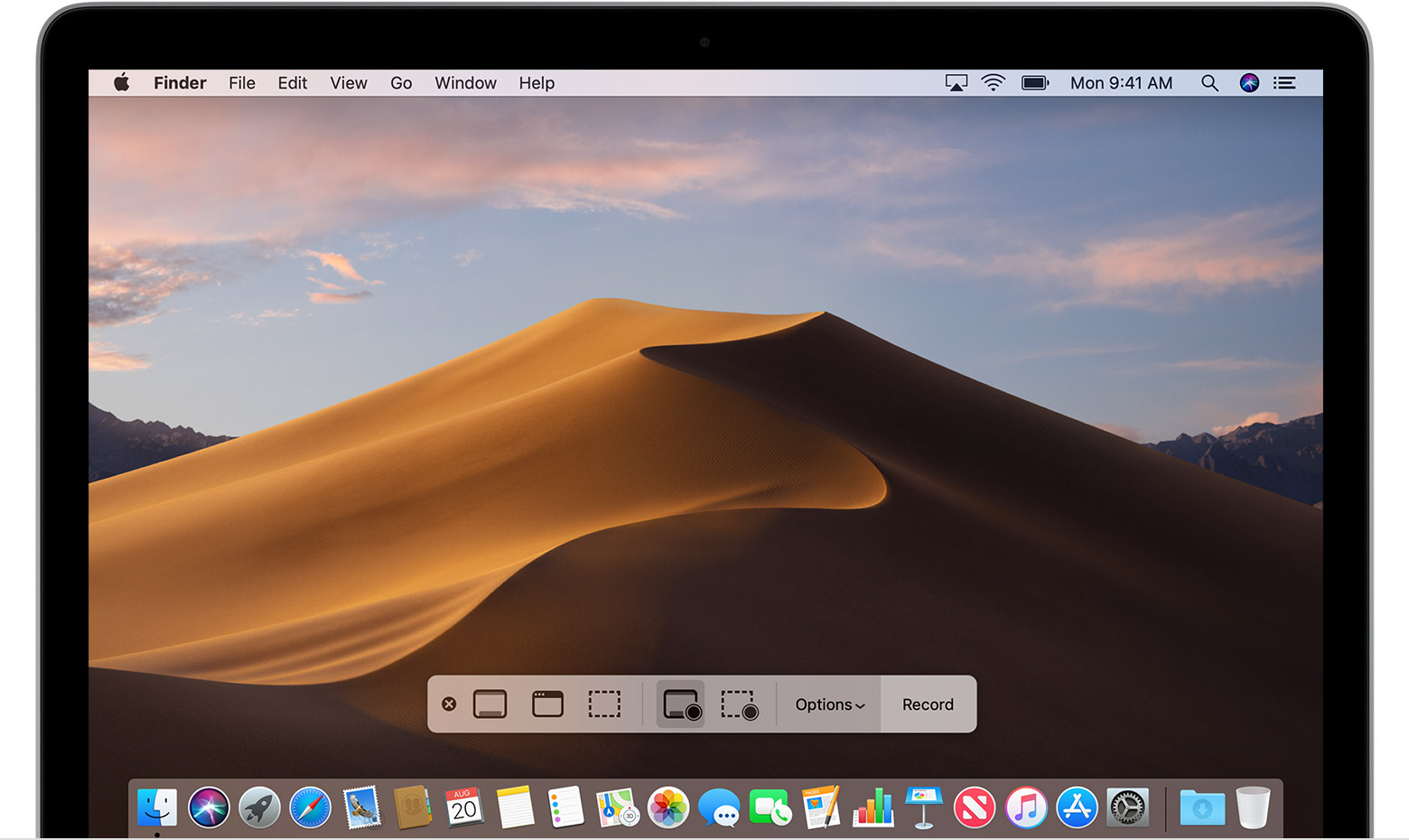
You can Record Entire Screen, or Record Selected Portion.Open the screenshot toolbar by pressing Command + Shift + 5.Here’s how to take a screen recording in Mojave: Instead of using QuickTime – which is the method we outline below – there is a Screen Record tool built right into the new screenshot toolbar. MacOS Mojave when it arrived in September 2018. QuickTime will automatically open the screen recording when you click the Stop button.Screen recording became a whole lot easier in.
 To stop recording, click the Stop button (white square in a gray circle) or use the Command, Control, Esc keyboard shortcut. Click Record Selected Portion, click the red Record button, then drag the dotted line to choose an area to record only part of the screen. Click the Record Entire Screen, click the red Record button, then click anywhere on the screen to begin recording the entire screen. Select Show Mouse Clicks in Recording to show a black circle around your mouse pointer. If you hear feedback, lower the volume or use a different microphone. Move the volume slider to change the audio during recording. If you use your Mac's internal microphone, it will pick up internal and external audio. If you want to record audio, be sure to click Options, then choose a microphone. Click the caret next to Options to choose where the screen recording will be saved, whether or not to set a timer, and more. From left to right, they are Capture Entire Screen, Capture Selected Window, Capture Selected Portion, Record Entire Screen, and Record Selected Portion. Screen recording controls will appear. In the menu bar, click File, then New Screen Recording.
To stop recording, click the Stop button (white square in a gray circle) or use the Command, Control, Esc keyboard shortcut. Click Record Selected Portion, click the red Record button, then drag the dotted line to choose an area to record only part of the screen. Click the Record Entire Screen, click the red Record button, then click anywhere on the screen to begin recording the entire screen. Select Show Mouse Clicks in Recording to show a black circle around your mouse pointer. If you hear feedback, lower the volume or use a different microphone. Move the volume slider to change the audio during recording. If you use your Mac's internal microphone, it will pick up internal and external audio. If you want to record audio, be sure to click Options, then choose a microphone. Click the caret next to Options to choose where the screen recording will be saved, whether or not to set a timer, and more. From left to right, they are Capture Entire Screen, Capture Selected Window, Capture Selected Portion, Record Entire Screen, and Record Selected Portion. Screen recording controls will appear. In the menu bar, click File, then New Screen Recording. 

Open the QuickTime Player app on your Mac.If you've been wondering how to record the screen on your Mac with audio, you can do that using QuickTime.







 0 kommentar(er)
0 kommentar(er)
